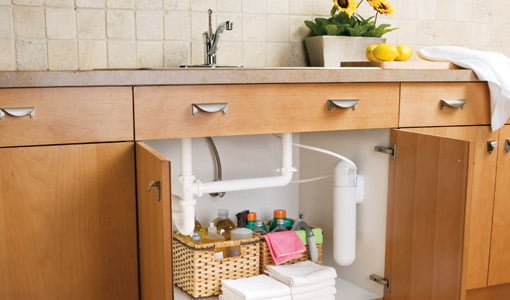How To Keep Pond Water Clear Without A Filter

Concerned about what's in your drinking water?
Well, you should be! While municipal drinking water in the U.S. is among the safest in the world, almost all of the 25 largest city water systems have reported violations of federal drinking water standards.
These include samples that contained significant levels of chlorine, lead, E. coli bacteria, and other contaminants.
Think you're better off drinking bottled water instead?
Sorry, wrong again! Bottled water is even less regulated than tap water and has been found to contain a number of contaminants, including potentially harmful chemicals from the plastic bottles that can leach into the water.

Fortunately, there's a simple solution — installing a water filter in your home. While some models may require a visit from the plumber, many are a snap to install. They're easy to use and available to fit any budget or lifestyle.
Plus, you'll save money compared to buying bottled water.
Here's an overview of water filters and how they benefit your home.
The Filter
The most important component of any system is the filter itself. The more common types are:
- Carbon: The most commonly used filter due to its high adsorption rate and low cost. May be impregnated with silver to help kill bacteria. Reduces lead, mercury, and chlorine, along with some organic chemicals and pesticides, while improving odor and taste. Carbon water filters do not eliminate heavy metals, nitrates, arsenic, or many microbes.
- Ceramic: Made from fossil shell material. Unlike carbon, ceramic filters can be cleaned and reused. They are often combined with a carbon filter for more complete coverage. Ceramic water filters can remove bacteria, cysts, and asbestos, but not mercury or lead.
- Reverse Osmosis: Water is forced through a semi-permeable membrane under pressure. They are large, slow, expensive, and waste several times more water than they clean, but produce highly filtered water. Reverse osmosis water filters can remove most contaminants including heavy metals, nitrates, arsenic, chlorine, pesticides, and bacteria. However, they also remove minerals that may be necessary for good health.
- Water Distillation: Water is boiled and the steam is then condensed. Distilling water kills microbes and removes lead and mercury, but some chemicals may pass through. Also, it can remove minerals that may be important for good health.
- UV Radiation: High intensity ultraviolet light kills microbes present in water, but does not eliminate most chemicals and other contaminants.

Water Filter Systems for Your Home
There are several different types of water filter systems available that vary in both cost and convenience.
Water Filter Pitcher
- Water is poured into a reservoir and drips through a filter into the pitcher.
- Simple to use, no installation required.
- Filtering is slow and limited to what the pitcher can hold, filter may clog over time.
- Cost: $15-$30.
How To Keep Pond Water Clear Without A Filter
Source: https://todayshomeowner.com/water-filters-for-your-home/
Posted by: harristhiblases.blogspot.com

0 Response to "How To Keep Pond Water Clear Without A Filter"
Post a Comment